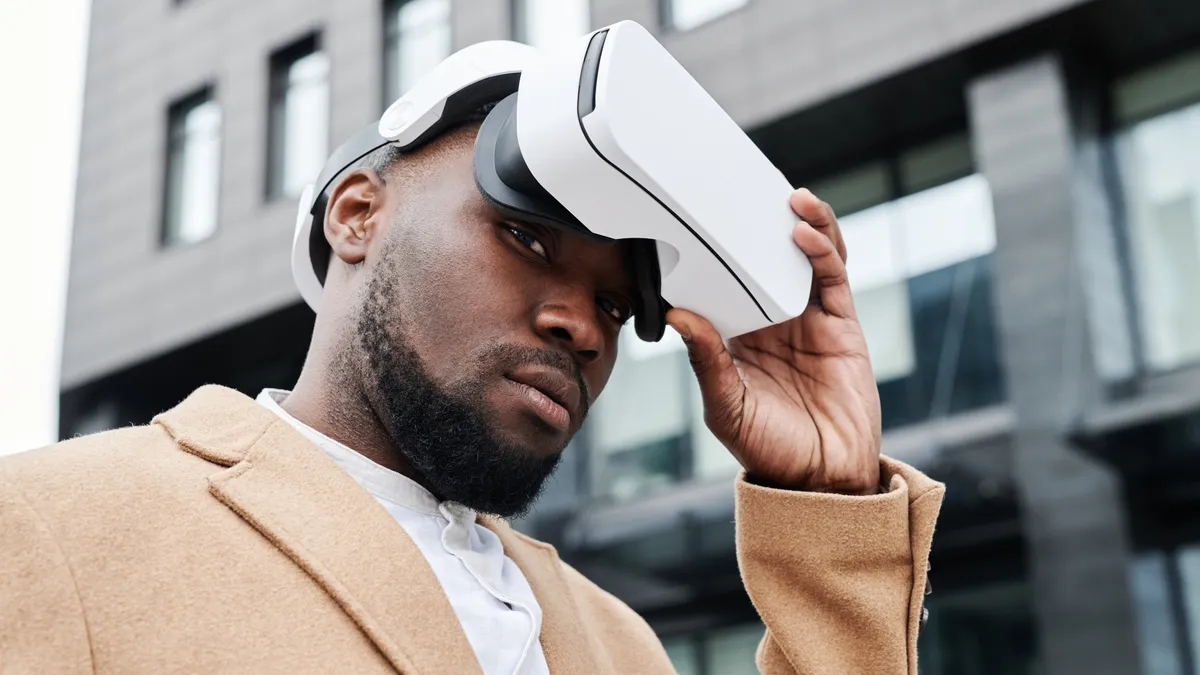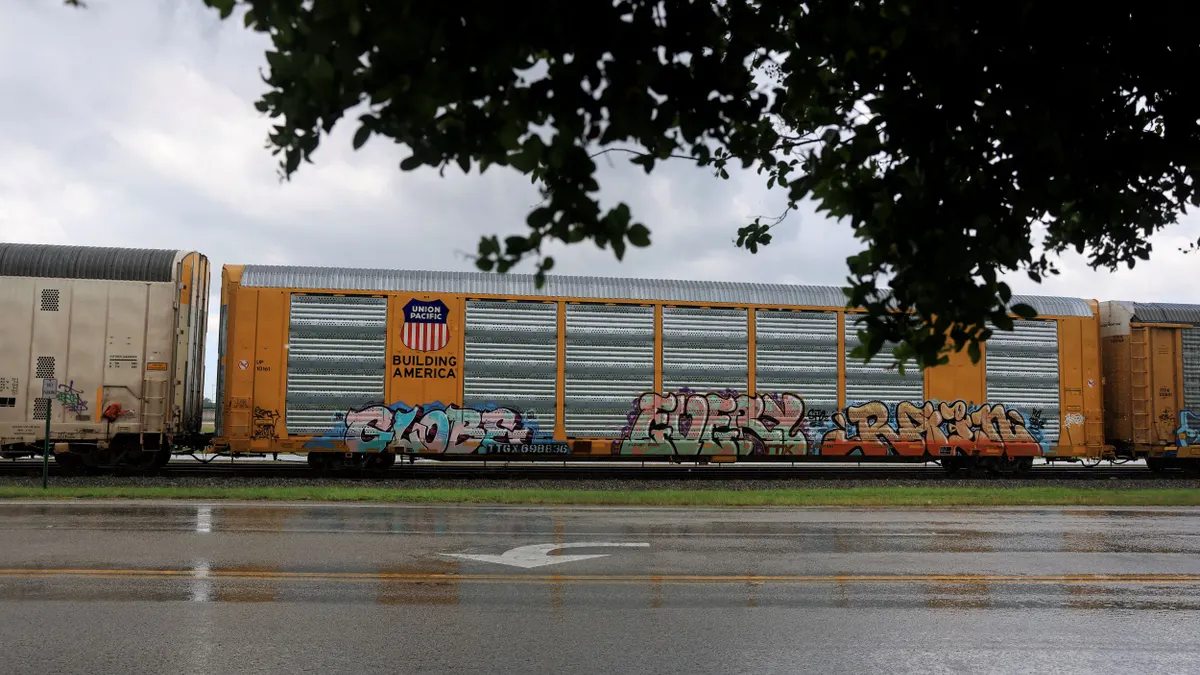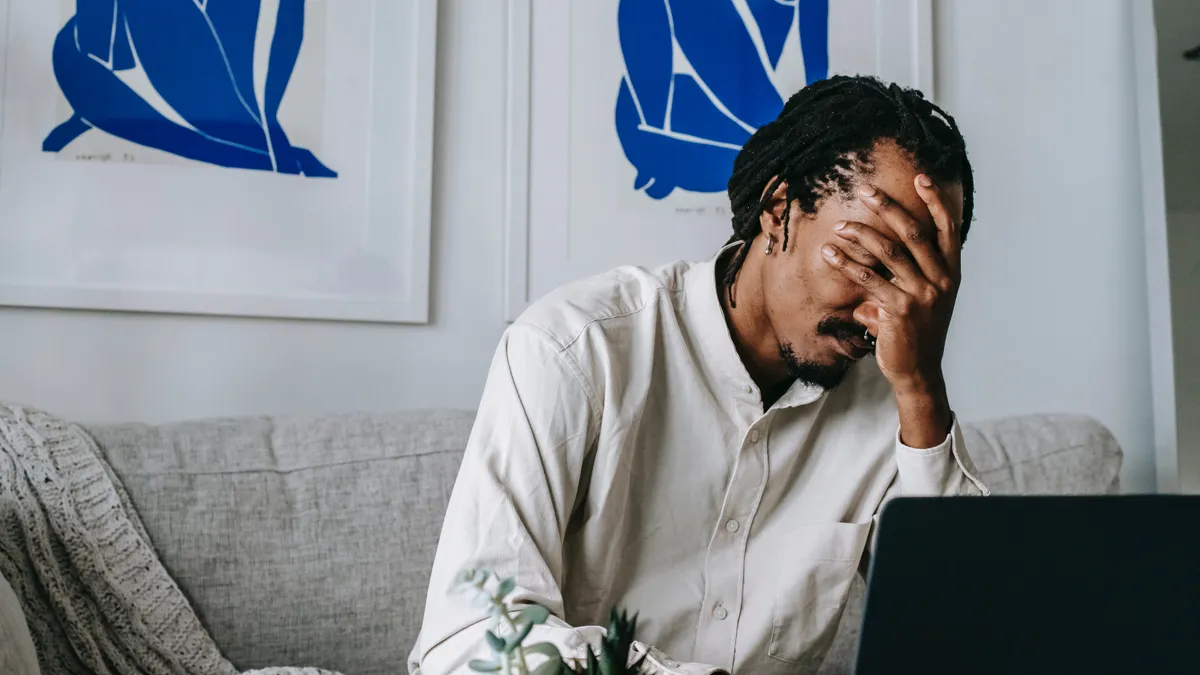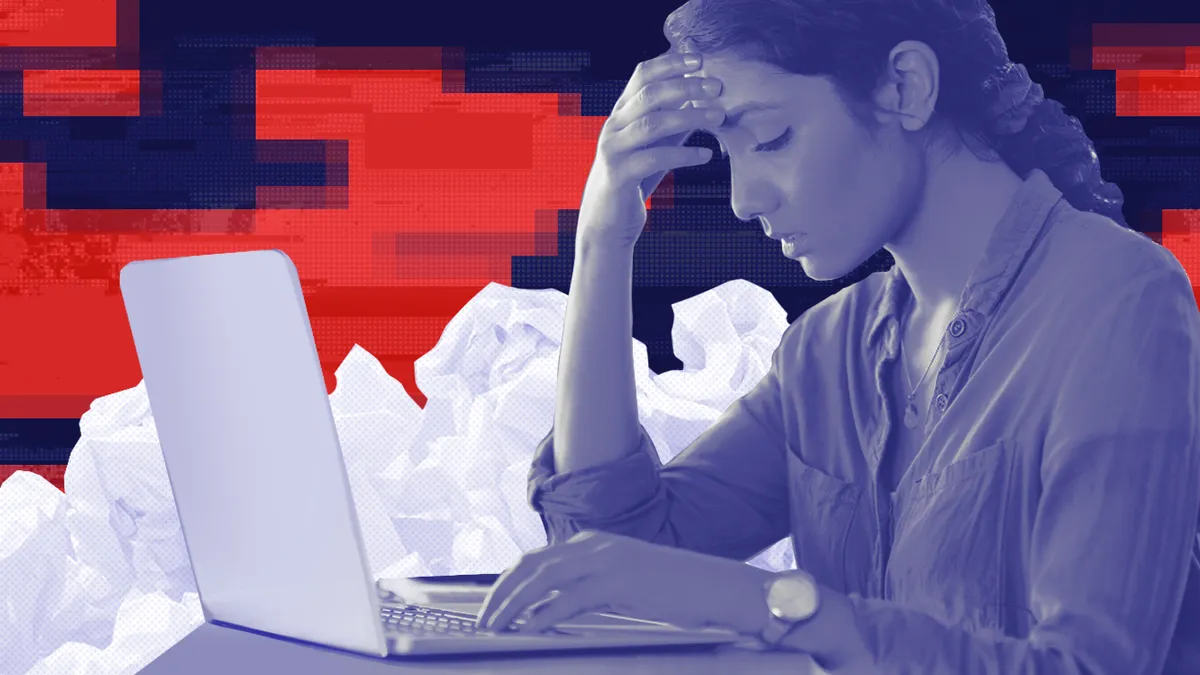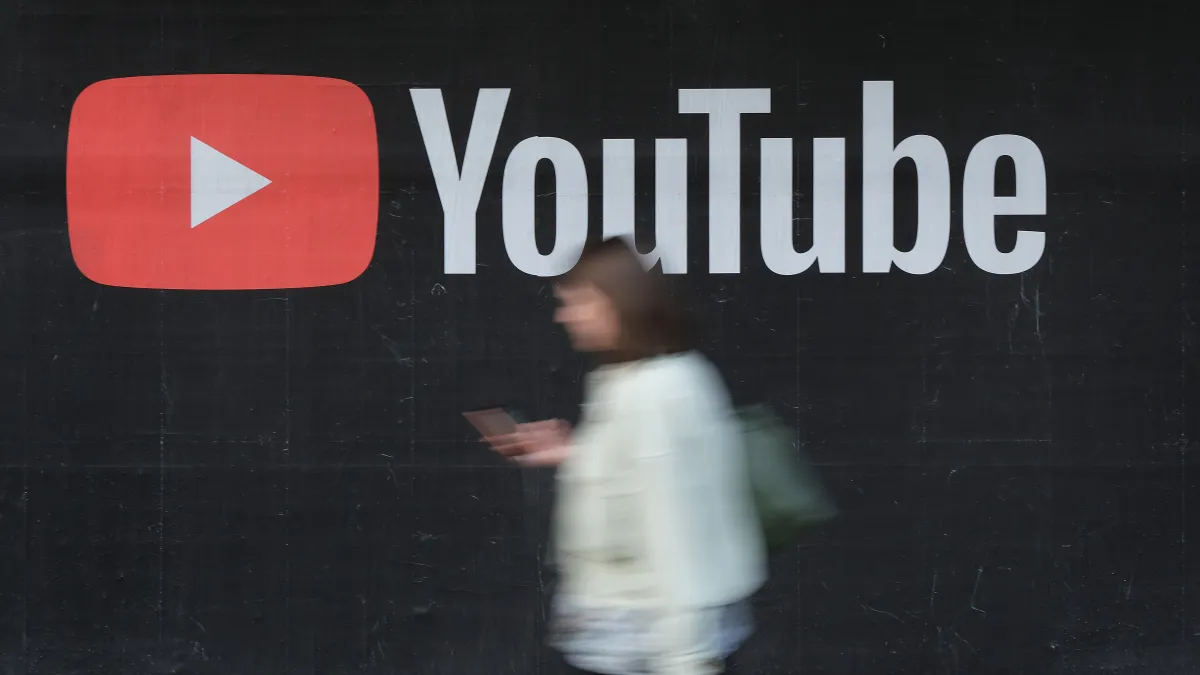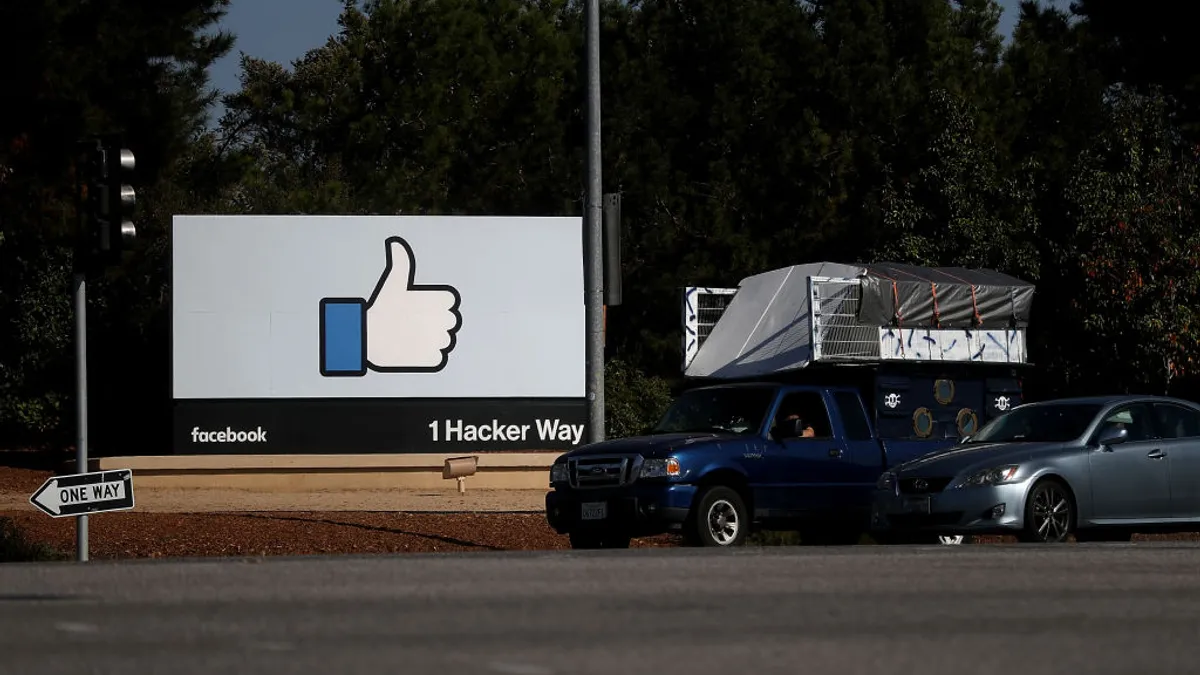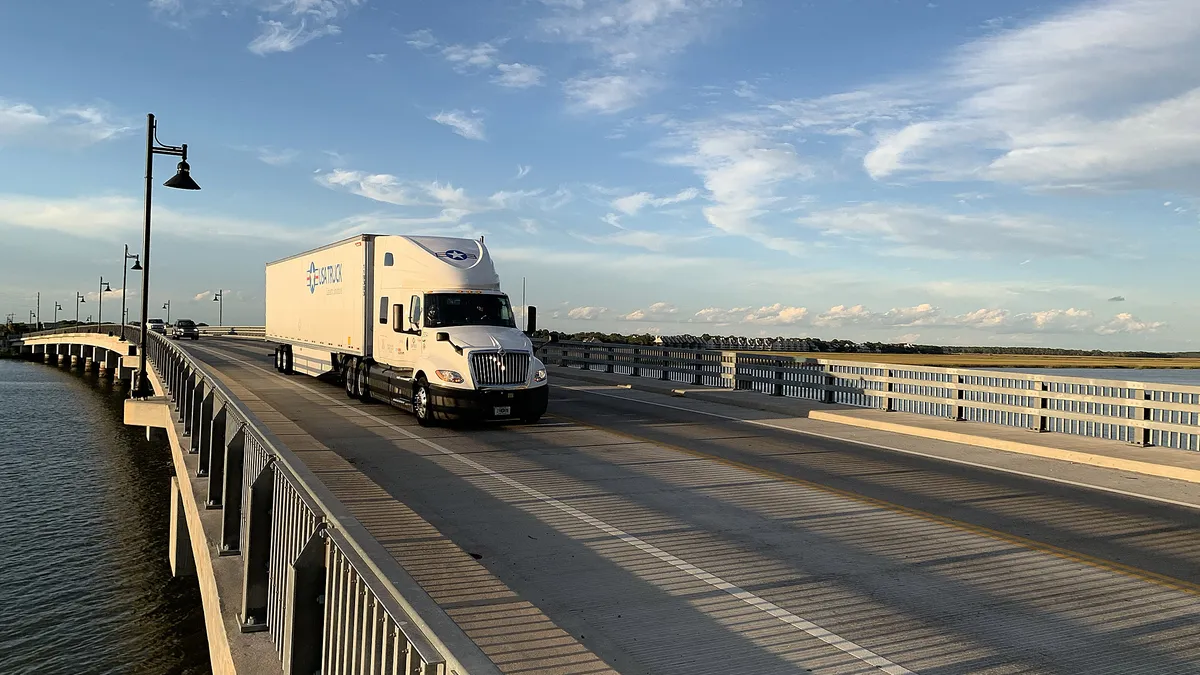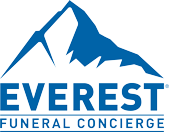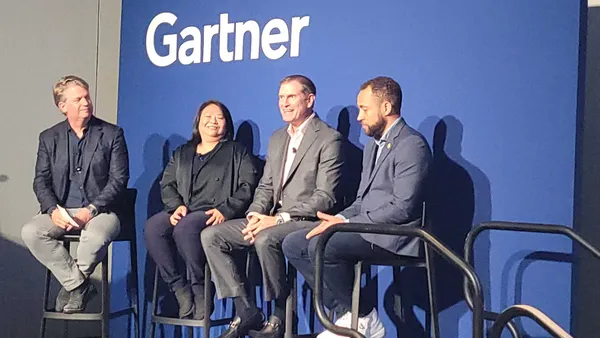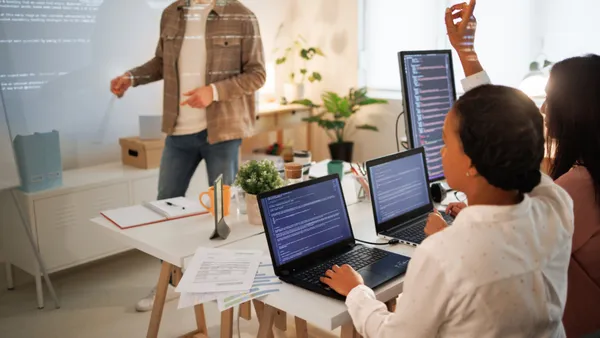Thirsty for a way to engage remote employees? Try virtual reality.
VR-facilitated trainings may seem like the latest Black Mirror episode in pandemic-era life. But according to Megan Kollar Dwyer, director of global diversity, inclusion and belonging at software company ServiceNow, VR training can be an intangible but invaluable way to administer anti-bias education.
ServiceNow's DIB strategy focuses on encouraging more "inclusive mindsets" among the company's employees. The best way to facilitate this process, from Kollar Dwyer's perspective, is through immersive learning. The DIB team sends employees VR headsets to pair with trainings, which ServiceNow partner Praxis Labs designed for mobile use. This is intentional, to combat Zoom fatigue and break up the burnout of staring at a laptop screen all day. (Kollar Dwyer did note that some people become nauseous with VR, so there is an accessible web browser alternative.)
"We create opportunities to further build those inclusive mindsets and skill sets, but also to practice in a space where you might say the wrong thing," Kollar Dwyer told HR Dive, adding that the absence of real people can actually be helpful here. Learning from mistakes? Valuable. Actively harming co-workers? Not so much.
Prior to this, ServiceNow offered augmented reality trainings. AR trainings differ in that they hinge on an employee's job title and potential experiences in that position, whereas VR trainings allow employees to take on multiple roles in a given scenario. For example, ServiceNow people managers would enter AR as managers handling tough feedback from a direct report. In the VR training scenario Kollar Dwyer outlined, employees play three different roles in a job interview.
"It's in an interview setting, where a candidate is being interviewed by an all-White interview panel in a majority White company, and the candidate is not White. And the candidate experiences some incidents of bias. That results in sort of high anxiety in the interview and [ultimately] underperforming," she explained. Regardless of identity, ServiceNow employees run through the simulation as the person of color experiencing bias, a White person on the hiring team and another White employee bearing witness to this tense interview experience.
That employees get to envelop themselves in multiple experiences is crucial. It helps with a facet of diversity and inclusion training that Kollar Dwyer referred to as "empathy-building."
Since implementing VR training, the ServiceNow DIB team has received two sets of feedback. "‘Wow, I didn't fully understand how that might feel. I've been the person who said this and now that I'm on the receiving end, it's landing for me.' Taking on an identity in virtual reality doesn't mean you all of a sudden understand someone's lived experience," Kollar Dwyer said. "But it can be a bridge into a deeper understanding."
On the flip side, these VR trainings have spurred some employees to speak candidly about their regrets. "We've also gotten feedback from participants early on, saying, ‘Oh my gosh, I've been in this situation and I didn't know what to say … I was the bystander. I stood by and I said nothing, and now you're giving me an opportunity to do something different,'" Kollar Dwyer said.
In that spirit, she added, some of the learning components touch on what employees can do if they missed an opportunity to speak up. The design team specifically crafted a scenario to demonstrate best practices for bystanders looping back and checking in with victims of bias or microaggressions. There are also prompts that ask employees to review their choices throughout the VR learning modules, and decide if they would have done anything differently.
In some ways, a hybrid work environment has lent itself remarkably well to this fresh take on bias training. Kollar Dwyer said holding these at-home learning sessions has put employees more at ease by eliminating "the fear that folks hold around the judgment of saying the wrong thing" — or the harm created when employees witness their co-workers' bias in action.
"Folks are at home," Kollar Dwyer added. "This is a safe space."



